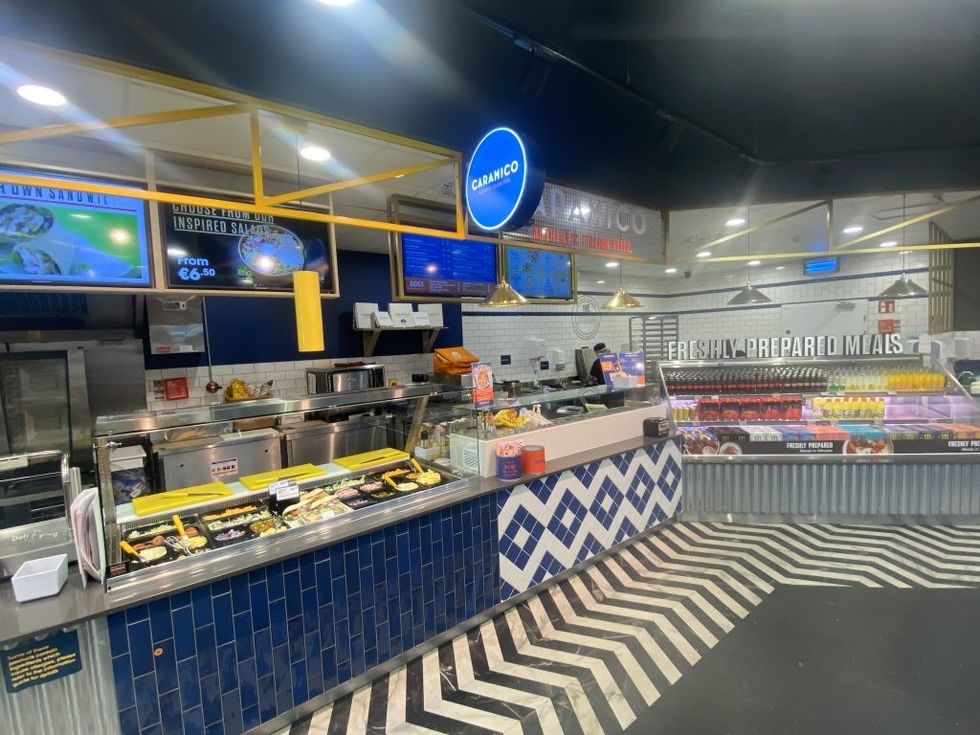Proprietary freshly made food can be a great way to propel customer visits, store margin and associated impulse sales thus boosting the overall revenue of local convenience stores which are currently burdened by cost-of-living crisis, low footfall and legislative prohibitions, Asian Trader has learnt.
The UK food-to-go (FTG) sector has been tipped to grow 3.5 per cent in 2024, reaching a value of £23 billion, according to a new report from Lumina Intelligence. The report states that convenience store grab and go achieved strong food to go growth versus pre-covid, driven by investment in ranges and value and that value growth is expected to have been +17.4 per cent from 2019-2024.
According to TWC’s MealTrak, FTG sales through convenience stores have risen by 5 per cent in the last 12 months (MAT) despite the cost-of-living crisis and other factors. The segment has thus been emerging as one of the biggest drivers to independent convenience stores.
Many c-stores across the UK are leveraging fresh and hot FTG, either made in-house and/or sourced locally and a few of them are performing really well.
Wigston Fields News & Deli in a sleepy Leicester suburb and Baba’s Kitchen in Glasgow suburb are a few examples of how a corner shop can become a beacon for food lovers in the neighbourhood and thus emerging over and beyond the strict definition of convenience store.
Baba’s Kitchen Costcutter store owner Umar Majid has changed his store’s perception from “a convenience store with a bit of food” to “a food store with a bit of convenience” and is cashing the resulting benefits.
He has a special team of a chef and support staff who make everything in-store, so all the meals are always fresh. The menu remains flexible depending on the performance and changing demands.
“As our food sales have grown over the years, we have also seen an increase in soft drinks, confectionery and crisps as whenever a customer buys food, they usually also buy a drink. We sell between 300-350 meals a week with some of them giving us a minimum of 60 per cent margin,” Majid told Asian Trader.
Food and convenience retail industry guru and pathfinder Scott Annan bats strongly for proprietary fresh food, saying this section can easily be developed into a store’s USP, something that should be nurtured to beat competition and bring more footfall.

Annan told Asian Trader, “With UK independent retail having a 1.4 per cent and declining market share, proprietary fresh Food to Go is the only category that can increase customer visits, store margin and associated impulse sales of confectionery, snacks and drinks.
“Successful foodservice retailers include David’s Kitchen in Scotland, Jempson’s in East Sussex and Milestone in Northern Ireland. Fresh Food to Go is the dominant category across the Island of Ireland and is well established in what I term ‘tier one’ UK independents.”
The key point and the most noteworthy aspect of FTG is the promising margin, which usually falls into a range of 60-80 per cent (even > 100 per cent).
Annan said, “Tier two and three convenience retailers are waking up to the margin available from FTG. It’s taken a while and the profit loss cliff edge from the banning of disposable vapes is acting as a very loud wake up call.
“I recommend UK retailers to visit both Northern Ireland and The Republic to see best practice and the latest food trends. It’s a one-hour flight from most parts of the UK so there’s only lazy excuses not to do this!”
Ireland is only a few miles away, but its convenience sector is radically different in the missions it serves and the customers it reaches compared with that of the UK.
Stating that fresh food can become pivotal to success of corner shops, FTG expert Gavin Rothwell agrees with Annan, recommending UK’s independent retailers to take inspiration from their Irish and other European peer.
Rothwell cited 7-Eleven Denmark as the best example to take inspiration from.
“We have also seen some great developments from SPAR across a range of European markets, with the Netherlands being one such example,” Rothwell told Asian Trader.
“It can be daunting to move your business into a new area, and in particular one that requires different core competences, but there are many fantastic suppliers out there able to support. It’s possible to start small, but this needs to be balanced against the need to create an impact and reset customer perceptions around what your store is able to deliver.”
Rothwell recommends working with well known brands can provide a good route, adding instant credibility to the offer.
He, however added, “If you feel you have the core food competences and the right environment and structures in place, don’t be afraid to build your own proposition.”
Rothwell also feels that the food section can be a great savior amid increasingly volatile legislative environment.

“Many of the traditional drivers of sales and profit are diminishing in importance and, in some cases, are becoming more legislatively challenging and complex. Food-to-go isn’t the only opportunity, but it’s an increasingly well-trodden path for convenience retailers to look to pivot and develop their FTG propositions as core elements of their offer,” he said.
Global FTG expert Matt Cundrick believes that convenience stores are “incredibly well positioned" to cater to changing consumer needs when it comes to ready meals and a quick grab and go.
“Traditional meal cycles and routines have been replaced by snacking and more grab and go approach. Convenience stores are incredibly well positioned to take advantage of this and those that adopted and moved early have seen significant growth.
“Being easily accessible to the customer, and building a trust of fulfilling the mission have always been the mainstay of the sector, and food to go is purely the next step in this journey,” Cundrick told Asian Trader.
Best practices and New Trends
Demand for nuanced health and premium quality is driving new product development in the market, with most new products surveyed aligned with healthier eating, carrying price points of +£4.00, states the Lumina Intelligence report. Vegan, high protein and high fibre products all gained share year-on-year while gut health and immune system boosting products are the new kids on the block.
The introduction of tiered meal deal ranges allows store operators to avoid hiking costs of meal deals whilst bringing-in more premium and foodservice-standard ranges.
Cundrick cautions retailers to do a bit of research before embarking on this journey.

“Think over which missions are you serving and who is your customer. Getting branded support in for example hot snacks or pastries can help add instant credibility.
“If you have hot food to offer, don’t feel the need to offer it throughout your entire opening hours. Of course, make sure there are options, but think about focusing your key solutions just during the peak lunchtime and breakfast trading hours.”
Think about waste – and accept that you will have some.
“Think about how you serve products in their best state. For example don’t be tempted to stretch hot hold times beyond supplier recommendations – a bad experience in food-to-go will have a significant impact on the likelihood of a customer returning to your store.
Cundrick also reminds retailers to keep their neighborhood’s demography in mind.
“If you are going down the bespoke route, think about how you can make both unique to your store and relevant to the customers in your catchment. For example, if you’ve a lot of families, maybe consider children’s ranges or deals.
“Don’t underestimate the importance of coffee in driving footfall. But it does need to be done well. A sad-looking, poorly maintained coffee machine will likely detract from the rest of the store rather than enhance its appeal so consider the ongoing resource you will need to dedicate to upkeep and maintenance.
Talking about best practices in this section of the store, Cundrick recommends local retailers to group and signpost FTG proposition as well as keep it neat, attractive and well-lit.
“Retailers should consider coffee dwell time (during preparation of the drink) as an up-selling opportunity by offering pastries, donuts or sweet treats alongside the coffee unit,” he told Asian Trader.
If the space allows, having a small sitting area is another great way to boost FTG as well as other related sales. A little sitting area, either inside or right outside, can also work as a community meet and greet place.
One of the latest trends in FTG is vending machine which is increasingly becoming more prevalent. Growth here is huge in minimising labour costs but delivering increasingly better-quality product.
Self-serve solutions are also interesting and promising. Retailers looking to make ground here can help make their FTG section more profitable.
Food for thought
Industry experts cite fresh proprietary FTG as a great opportunity though they also want retailers to tread in this section with caution and only after extensive research.
Rothwell said, “Food-to-go won’t be right for everyone. But it’s a growing sector with broad appeal and the ability to attract new customer to your stores as well as getting existing customers returning to store more often – so think carefully before dismissing it as an opportunity.”
TWC Development Director Tom Fender also echoes Rothwell’s thoughts saying FTG is not for everyone.
“A full FTG offer isn’t right for every independent convenience retailer – certainly not from day one. We have to be realistic. But those who have started on their FTG journey should be ready to accelerate their offering. Marketing and communication are also keys, especially while introducing new lines.”
“Many convenience retailers already offer a very comprehensive and impressive FTG range. The benefits are clear – more footfall, higher margins, diversifying away from other categories which might be in decline and tailoring towards local community needs,” Fender told Asian Trader.
Looking beyond 2024, Lumina Intelligence believes that the sector could reach a market value of £25bn by 2027.
Be it Indian snacks and meals like samosa or a vegetarian curry or biryani, Italian delicacies or quick grab options like burgers and sandwiches to locally-made Polish bakeries, c-stores can create their own unique offering.
Annan strongly feels proprietary fresh FTG should be the way forward as it is one of the most effective ways to beat nearest multiple and/or discounter.
“Independent retail has traditionally relied on suppliers and symbol wholesalers to provide guidance on assortment and store layouts. However, proprietary fresh food means retailers can be their own supplier and store planner.
“This does not mean you are alone as there are hundreds of Tier-one retailers who can provide ‘do this and don’t do that’ advice,” he said.
C-stores can always offer more than just groceries. With a little research about clientele and lots of innovation, local shops can even position themselves as a more affordable, quick and a wholesome alternative to foodservice outlets.




